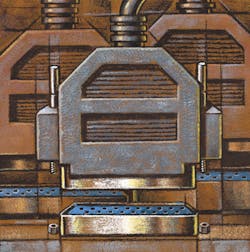While manual systems keep operators involved, they are subject to variation, inconsistent adherence and human error. The resulting problems often cause people to slip back into their old ways. Technology provides needed consistency, if applied appropriately, and can help accelerate continuous improvement programs to new levels of productivity.
Many enlightened management teams are adopting continuous improvement programs to improve operational performance and gain competitive advantage. ARC Advisory Group’s October 2005 survey of manufacturers indicates that 80 percent use a continuous improvement methodology.
Technology conundrum
A basic philosophy in continuous improvement programs is that the people who are closest to the process understand it and are best able to improve it. One problem with using technology (in the form of automated equipment or information systems) is that it separates the people from the process, and reduces the intimacy and understanding needed to make effective process improvements. Hence, the conundrum—should technology be avoided or embraced?
Ohno’s book was written in 1978, when highly automated processes meant excessive stoppages and long set-up times. Information Technology (IT) was difficult to use and unreliable, and used batch runs that created voluminous printed reports. Considering the state of automation and IT in 1978, Ohno was right when he advised companies to avoid technology.
It is an understatement to say that a lot has changed since 1978. Advances in reliability and ease-of-use of automation and IT systems offer the opportunity to take continuous improvement programs to higher levels. Today, software and related technologies provide visibility that allows a broader set of employees to gather ever more data about processes at both the plant floor and business levels. Employees can also analyze information faster and identify more opportunities for improvement. Rather than frustrating improvement, today’s technologies enhance the basic premises of Ohno’s approach. Simply stated, when designed appropriately, technology reduces costs while continuing to keep people connected to the process.
While companies have gained much with the traditional, minimal-technology approach, many continuous improvement programs have also stalled or are unraveling. Improvements based upon manual systems are often difficult to maintain and are error prone. Kanbans are a good example. Traditionalists recommend using printed hardcopy cards, but lost cards become a major issue as systems extend beyond “line of sight.” This is further exacerbated when supply is moved to separate facilities requiring use of Fax or e-mail. Faced with this problem, companies can give up on their programs. The Lean Institute surveyed its Members in February 2004, and 36 percent stated that their major obstacle was “sliding back to old ways.”
Electronic Kanban (eKanban) has proven to be a good solution to this problem. It reduces errors, yet keeps operators involved through management of exceptions. Even Toyota has recognized the benefits of using appropriate technology while still remaining true to the basic ideas underlying the Toyota Production System (TPS). Their facility in Georgetown, Ky., uses eKanban technology to schedule parts from suppliers into an assembly line that produces a new car every 55 seconds.
ARC recommends that manufacturers with continuous improvement programs recognize that technology has become a key enabler of progress, not a complication to be avoided. Software suppliers should recognize that manufacturers are expecting more support for strategies such as Lean and Six Sigma in the products they will be buying. And if the leaders of your continuous improvement program irrationally object to adopting technology, consider new leadership.

